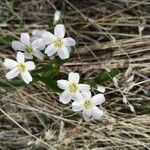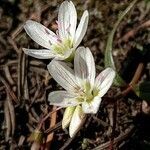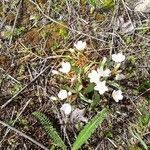A small herb. It grows 5-15 cm high. It has a corm 1 cm thick. The leaves at the base are usually about 2 and are oblong or sword shaped. The stems have 2 opposite leaves without stalks. They are broadly sword shaped. The flowers are at the end. There are a few flowers in a cluster. The petals are red coloured with purple veins. The fruit are 1 celled capsules with 3 valves.



